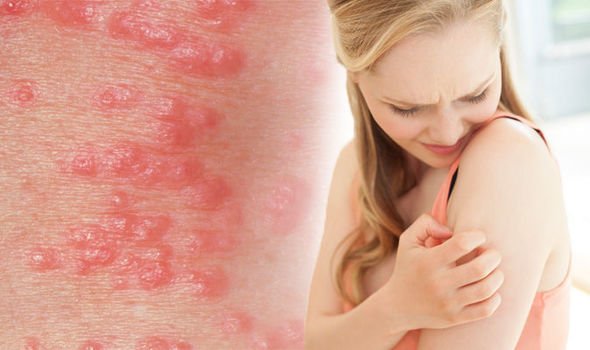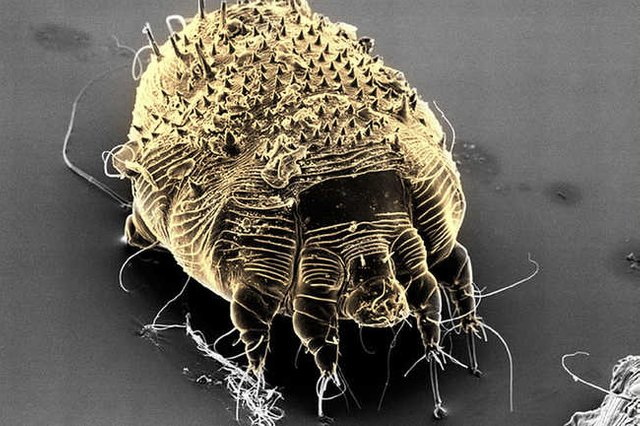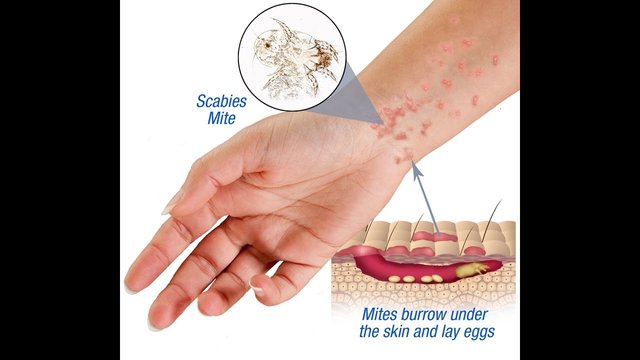Health education 05: What you need to know about scabies!
Scabies
We all are familiar with various types of infections such as bacterial infection, viral infection, fungal infection etc. But today, we are going to learn something different. We will know about infestation; infestation of a mite on our skin which causes an irritating disease condition known as scabies.

Image source
What do we mean by infestation?
According to the Park Preventive and Social Medicine, an infestation is defined as:
For persons or animals, the lodgement, development & reproduction of arthropods e.g. lice, itch mite etc. on the surface of the body or in the clothing is known as an infestation.
Some schools of thought use the term ‘infestation’ to describe an invasion of the gut by parasitic worm e.g. Hookworm infestation.
The infestation has 3 steps
- Lodgement
- Development
- Reproduction
What is itch mite?
Our today’s topic, scabies, is caused by an arthropod known as itch mite (scientific name is Sarcoptes scabiei). Let us know a little about this tiny arthropod before going for details on scabies.

Image of sarcoptes scabiei source
Itch mite was first discovered in 1687. During the life cycle, it passes through 4 stages:
- Eggs: The female mite lays eggs in the most upper layer of our skin known as stratum corneum by making a burrow. Lady mite may lay 2-3 eggs per day and a total up to 30 eggs in her lifetime.
- Larva: Within 3-4 days, the eggs hatch into larvae. They have 6 legs and using them they come up to the surface of the skin and again enter into the hair follicles.
- Nymph: In the next 3-4 days, the larvae mature into a nymph which takes 6-8 days more to turn into adult mite. They have 8 legs.
- Adult mite: An adult mite lives for 1-2 months. A gravid female mite is around 0.3mm long.
So, what is scabies?
Scabies is an intensely itchy skin condition, especially at night time, caused by the infestation of an arthropod or ectoparasite known as itch mite. People of both sexes, all races, ages and of any social classes are affected but the children and young adult, as well as people from the poorer countries with social overcrowding, are most commonly affected. Each year around 300 million cases of scabies are found in the world and among them, at any time, approximately 130 million untreated cases of scabies are found.
How does the disease process start?
After the lodgement in our skin, the gravid female mite starts making burrows within the stratum corneum. Then they start laying eggs which go through the life cycle as mentioned above. The parasite of every stage of life along with their secretion/excretion creates a local reaction in the skin. The itching and various looking rashes are developed from a sensitization reaction to the mites and their products.
How long does it take to manifest scabies?
It depends upon whether it is the first time infestation or re-infestation! A person with an initial infestation may remain asymptomatic for 6 weeks which is called the incubation period. It means that (suppose) your kid starts itching in some part of your body (see below) due to scabies today, he/she contracted it around 6 weeks earlier from someone else! But in the case of re-infestation, due to prior sensitization, the signs and symptoms develop much faster.
What are the symptoms and signs of scabies?
- Pruritus (itching) is the prominent symptom. It typically intensifies at night and after a hot shower.
- Presence of scabietic burrows is pathognomonic of scabies. Burrows are dark wavy lines on the skin and those are 3-15 mm long.
- Various forms of rashes are found in the specific parts of the patients. Those may be a pimple-like rash, red papules, vesicles, blisters, occasionally pustules or excoriated rash resembling eczema.
- Severe scratching with nails may cause sores on the affected area. Later, bacterial infection may complicate the condition; it is called a secondary bacterial infection.

Image of burrow and rash on the wrist source
Which body parts are mostly affected?
Scabies is classically found in some specific body parts as Sarcoptes scabiei has some favourite spots to colonize. The lesions are usually found symmetrically (both side of the body in the same place).
- Hand and wrist (63%): Finger webs, inter-digital spaces and inner aspect of the wrists are most favourite spots for the mite
- Extensor (outer) aspect of the elbow (10.9%)
- Around the waistline and navel
- Genitals of male and breast in the female
- In infants, the face, scalp, neck, palm and sole can be affected.
Scabies should be considered in a patient with intense pruritus (especially at night) and symmetrical superficial, excoriated, papulovesicular skin lesion in the characteristic locations, particularly if there is a history of household contact with an infested person.
How can we contract scabies and who are at higher risk?
It is transmitted from person to person in two ways:
- Close prolonged skin contact: Typically scabies spread during prolonged skin-to-skin contact that allows the mites enough time to crawl from one person to another. The itch mite neither can jump nor can fly! So that talking with scabies infested person or doing a quick handshake or hug won’t transfer the arthropod.
- Via contaminated clothes or beddings: The mites can be transmitted via sharing of contaminated beddings or clothes.
As we can see that it needs close skin contact among the persons for the transmission of the disease, the people of the following groups are at higher risk of contracting scabies:
- Prison inmates
- People in child care facilities or daycare centres
- Sexually active adults, especially engaged with multiple sexual partners
- People working in a nursing home
- People working with a developmentally disabled person who needs continuous cares like bathing or dressing
- People living in overcrowded places and sharing same beds or clothes
Are there any chances of complications of scabies?
Although scabies is a trivial complaint and easy to treat, it can create some complications as well. Due to intense itch, people find it difficult to refrain themselves from scratching which is more difficult for the children. Frequent scratching with nails invites secondary bacterial infections. This bacterial skin infection may lead to some serious health conditions notably neonatal septicemia, post-streptococcal glomerulonephritis and rheumatic fever.
How to diagnose scabies?
A doctor can diagnose the disease from presenting complaints and identification of mites, eggs or faecal pellets within the burrows. A doctor will unroof the burrow with a sterile needle or scalpel blade and scrape out the contents. The contents should be examined under the microscope. A magnifying glass or dermoscope may help.
How to treat a patient with scabies?
There are available topical agents (cream or lotion) in the market which can effectively kill Sarcoptes scabiei.
- 5% permethrin cream: Most widely used cream. Apply to the whole body [except the head and neck area but in case of a child less than 2 years, apply to head and neck too] from below the neck to toes – with careful application to inter-digital spaces, the umbilicus and under the fingernails. Keep it overnight (at least 8-14 hours) and wash off with soap and water. Repeat the same cream after 1 week in the same way.
- Malathion (0.5%) cream: Can be used if permethrin is not available. Apply in the same way of permethrin and keep it for 24 hours and then wash off. Repeat after 1 week.
- Crotamiton 10% cream: Apply from neck to toes. Re-apply in 24 hours (do not take bath). Take a final bath after 48 hours of the final application. Repeat after 7-10 days (if mite present).
- Benzyl benzoate 25% lotion (BBL): Apply 3 times 12 hours apart without washing off (at 36th hour, 3rd application). Take a bath 12 hours after (a total 48 hours after the first application) the last application. It is very irritating and should not be used in children.
- Lindane (0.5-1%): It is cheap but there are reports of drug resistance and neurotoxicity.
- Oral ivermectin: A single dose (20 micrograms/kg) of ivermectin is effective in the case of poor compliance from the patients or in case of heavy infestation or immunosuppression.
- For itching: Antihistamine, salicylates, and calamine lotions are used to get relief from itching. Topical glucocorticoids (steroids) creams are useful as well.
What are the other treatments besides medicines in case of scabies?
These are equally important steps and must-to-follow during the treatment of scabies.
- Not only treat the patient but also treat all the close contacts, even if they are not having any symptoms of scabies
- Re-apply the cream/lotion to hands if they are washed off during the period of treatment
- Wash all the clothes or beddings with hot water (preferably at 60-degree centigrade) to avoid re-infestation
How long it takes to treat scabies?
Within 1 day (24 hours) of effective treatment, the mites and eggs become dead, i.e. the disease becomes non-communicable. But the itching may persist for few more weeks.
Conclusion:
In the USA, scabies accounts for up to 5% of visits to the dermatologists. In non-developed countries, the percentage is many more. During the outbreaks in the pre-school, daycare centre, hospitals, old homes, nursing homes etc. the condition becomes worse. Proper health education and effective timely treatment are essential to keep the disease under control.
References:
- Kumar & Clark’s Clinical Medicine 9th Edition (2016); 1347
- Harrison’s Principles of Internal Medicine 2 volumes 19th Edition; 2744
- Davidsons Principles and Practice of Medicine 23rd edition; 1241
- Park’s preventive and social medicine; 93, 782
- www.webmd.com
Presents Useful Medical Questions and Answers for medical personals
Oh interesting. What if the infected person bathes in the beach everyday? Would that kill off the mites etc too? 😅
Is the water of the beach contaminated with high concentration of any of the mentioned cream or lotion? If the answer is yes and the infested person keep submerged his/her body for 8-14 hours, then, yes, theoretically possible :D
Posted using Partiko Android
Lol. What about if they swim in the dead sea? 😂😅
They can swim in the dead sea to wash off the cream applied and kept in their body for at least 8-14 hours. Then they can hope for the cure.
I see. That means without the cream they really cannot be cured. 👍👍👍
Yes. That's the idea :)
You got a 35.61% upvote from @bdvoter courtesy of @hafiz34!
Delegate your SP to us at @bdvoter and earn daily 100% profit share for your delegation & rewards will be distributed automatically daily.
500 SP, 1000 SP, 2500 SP, 5000 SP, 10000 SP.
If you are from Bangladesh and looking for community support, Join STEEM.com.bd Discord Server & If you want to support our service, please set your witness proxy to BDCommunity.
You have recieved a free100% upvote from @saiduzzaman . For Nice Article . Carry On Brother
One word for you- Great.
There are a very few good writer in BD like you. I hope you will get more support from different communities..
Keep it up.
Thank you for such nice word
Hi @hafiz34!
Your post has been upvoted by @bdcommunity.
You can support us by following our curation trail or by delegating SP to us.
20 SP, 50 SP, 100 SP, 300 SP, 500 SP, 1000 SP.
If you are not actively voting for Steem Witnesses, please set us as your voting proxy.
Feel free to join BDCommunity Discord Server.
Thank you very much for voting on my post. Much appreciated.
Thank you very much
For voting on my post. Much
Appreciated.
- hafiz34
I'm a bot. I detect haiku.